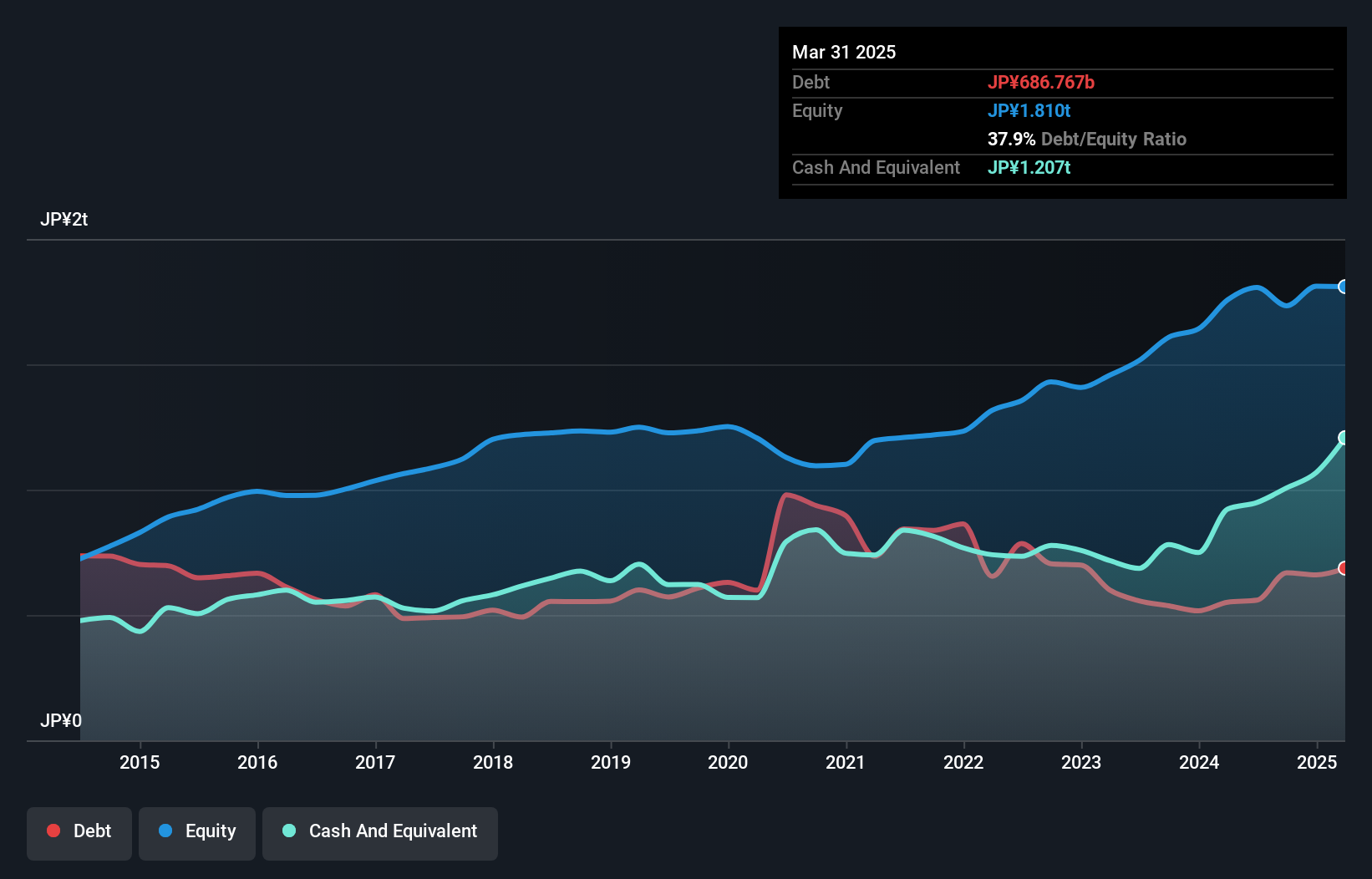The external fund manager backed by Berkshire Hathaway's Charlie Munger, Li Lu, makes no bones about it when he says 'The biggest investment risk is not the volatility of prices, but whether you will suffer a permanent loss of capital.' So it seems the smart money knows that debt - which is usually involved in bankruptcies - is a very important factor, when you assess how risky a company is. Importantly, Mazda Motor Corporation (TSE:7261) does carry debt. But should shareholders be worried about its use of debt?
What Risk Does Debt Bring?
Debt and other liabilities become risky for a business when it cannot easily fulfill those obligations, either with free cash flow or by raising capital at an attractive price. Ultimately, if the company can't fulfill its legal obligations to repay debt, shareholders could walk away with nothing. However, a more frequent (but still costly) occurrence is where a company must issue shares at bargain-basement prices, permanently diluting shareholders, just to shore up its balance sheet. By replacing dilution, though, debt can be an extremely good tool for businesses that need capital to invest in growth at high rates of return. When we think about a company's use of debt, we first look at cash and debt together.
What Is Mazda Motor's Net Debt?
As you can see below, at the end of March 2025, Mazda Motor had JP¥686.8b of debt, up from JP¥550.9b a year ago. Click the image for more detail. But on the other hand it also has JP¥1.21t in cash, leading to a JP¥520.6b net cash position.

How Healthy Is Mazda Motor's Balance Sheet?
According to the last reported balance sheet, Mazda Motor had liabilities of JP¥1.50t due within 12 months, and liabilities of JP¥778.7b due beyond 12 months. Offsetting this, it had JP¥1.21t in cash and JP¥148.3b in receivables that were due within 12 months. So its liabilities total JP¥924.3b more than the combination of its cash and short-term receivables.
The deficiency here weighs heavily on the JP¥563.5b company itself, as if a child were struggling under the weight of an enormous back-pack full of books, his sports gear, and a trumpet. So we definitely think shareholders need to watch this one closely. After all, Mazda Motor would likely require a major re-capitalisation if it had to pay its creditors today. Given that Mazda Motor has more cash than debt, we're pretty confident it can handle its debt, despite the fact that it has a lot of liabilities in total.
See our latest analysis for Mazda Motor
It is just as well that Mazda Motor's load is not too heavy, because its EBIT was down 26% over the last year. When a company sees its earnings tank, it can sometimes find its relationships with its lenders turn sour. When analysing debt levels, the balance sheet is the obvious place to start. But it is future earnings, more than anything, that will determine Mazda Motor's ability to maintain a healthy balance sheet going forward. So if you want to see what the professionals think, you might find this free report on analyst profit forecasts to be interesting.
Finally, a company can only pay off debt with cold hard cash, not accounting profits. Mazda Motor may have net cash on the balance sheet, but it is still interesting to look at how well the business converts its earnings before interest and tax (EBIT) to free cash flow, because that will influence both its need for, and its capacity to manage debt. Over the last three years, Mazda Motor recorded free cash flow worth a fulsome 90% of its EBIT, which is stronger than we'd usually expect. That puts it in a very strong position to pay down debt.
Summing Up
Although Mazda Motor's balance sheet isn't particularly strong, due to the total liabilities, it is clearly positive to see that it has net cash of JP¥520.6b. The cherry on top was that in converted 90% of that EBIT to free cash flow, bringing in JP¥177b. Despite its cash we think that Mazda Motor seems to struggle to handle its total liabilities, so we are wary of the stock. The balance sheet is clearly the area to focus on when you are analysing debt. But ultimately, every company can contain risks that exist outside of the balance sheet. To that end, you should learn about the 3 warning signs we've spotted with Mazda Motor (including 1 which can't be ignored) .
At the end of the day, it's often better to focus on companies that are free from net debt. You can access our special list of such companies (all with a track record of profit growth). It's free.
New: Manage All Your Stock Portfolios in One Place
We've created the ultimate portfolio companion for stock investors, and it's free.
• Connect an unlimited number of Portfolios and see your total in one currency
• Be alerted to new Warning Signs or Risks via email or mobile
• Track the Fair Value of your stocks
Have feedback on this article? Concerned about the content? Get in touch with us directly. Alternatively, email editorial-team (at) simplywallst.com.
This article by Simply Wall St is general in nature. We provide commentary based on historical data and analyst forecasts only using an unbiased methodology and our articles are not intended to be financial advice. It does not constitute a recommendation to buy or sell any stock, and does not take account of your objectives, or your financial situation. We aim to bring you long-term focused analysis driven by fundamental data. Note that our analysis may not factor in the latest price-sensitive company announcements or qualitative material. Simply Wall St has no position in any stocks mentioned.
About TSE:7261
Mazda Motor
Engages in the manufacture and sale of passenger cars and commercial vehicles in Japan, North America, Europe, and internationally.
Excellent balance sheet average dividend payer.
Similar Companies
Market Insights
Community Narratives



